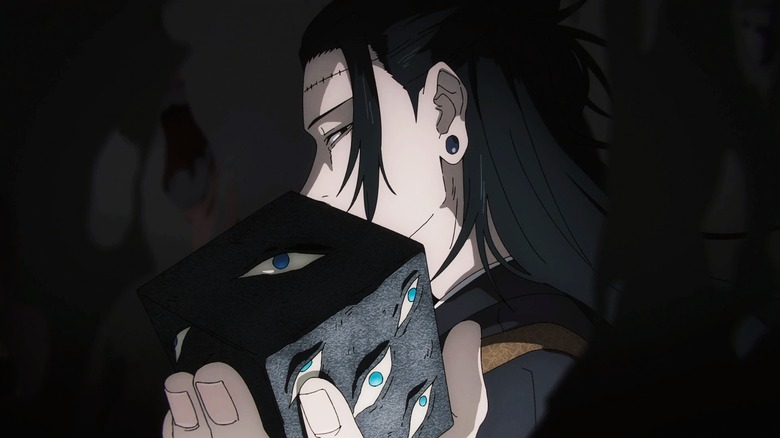
MAPPA
This post contains major spoilers for Gege Akutami's "Jujutsu Kaisen" and its ongoing anime adaptation.
In a world where cursed spirits hover around unwitting humans and jujutsu sorcerers are compelled to exorcise them, sudden, brutal deaths have become a part of the bleak reality of "Jujutsu Kaisen." Mangaka Gege Akutami might have kickstarted the narrative with a one-shot in 2017 — titled "Jujutsu Kaisen 0: Jujutsu High" — but positive reception of his work eventually birthed "Jujutsu Kaisen," his most popular and seminal work to date. The manga has finally come to a close, with its 271st chapter wrapping up this incredibly engaging, albeit traumatizing journey, in which silver linings are scarce, but deeply appreciated nonetheless.
Before we talk about the most brutal, impactful deaths in the series, please keep in mind that the term "best" simply denotes narrative junctures that are deeply compelling: while most deaths infuse "Jujutsu Kaisen" with its signature tragic overtones, others feel cathartic from the point of view of those we are rooting for. I'll be choosing both from the finished manga and the ongoing anime (which has aired 2 seasons so far, with the Shibuya Arc constituting a chunk of Season 2), keeping the impact of said death on the evolving story, and how the scenes in questions are mapped out at the forefront. The total tally of important character deaths in "Jujutsu Kaisen" is close to 64 (!), so I'll be prioritizing 10 complex, well-loved (or thoroughly despised) characters whose absence is sincerely felt even after the manga's surprisingly hopeful resolution.
Some hard-hitting deaths have unfortunately not made the list. For instance, Mechamaru/Kokichi's sacrifice is one of the turning points that precede the Shibuya incident, and his death at the hands of Mahito is the epitome of a dream unfulfilled. Some of the antagonist deaths are cathartic or underwhelming, depending on how you view it: while Mahito's demise feels immensely well-deserved, Kenjaku's end at the hands of Yuta feels like a cop-out, as it generates the unsavory feeling of him not having suffered enough. Without further ado, let us head toward Trauma Central™ and revisit some of the most compelling deaths in the manga/anime.
Honorable mention: Nobara Kugisaki (Chapter 124/Season 2, Episode 19)

MAPPA
Nobara's "death" during the Shibuya Arc felt like an insult to injury, as it was sudden, brutal, and essentially robbed us of the bond between the central trio of young protagonists who emerged as endearingly inseparable. "Jujutsu Kaisen" felt unspeakably hollow after Nobara's fate remained unconfirmed while the story progressed, especially as a severely traumatized Yuji witnessed the fatal blow she was dealt by Mahito, leading to his agonized breakdown halfway through the battle. Nobara's life flashed before her eyes as she lay on the floor, battered and broken, and her final words to Yuji were the heartwrenching "Tell everyone it wasn't so bad." As half of her face was disfigured, and parts of her cranium were affected, Nobara was considered dead, even when we hoped against hope that she would return.
And she does. Even though Chapter 144 of the manga serves as an indirect confirmation of her supposed demise, she comes back, better than ever, in Chapter 267, after which the trio finally gets the chance to reunite. Arriving at the location where Sukuna's final finger rests, Nobara emerges wearing an eyepatch and uses her Resonance cursed technique to damage Sukuna's soul to a considerable extent. This creates the perfect opening for Yuji to take over, granting a greater narrative purpose to her much-awaited return, but I can't help but wonder if her significance to the narrative could have been more thoughtfully woven or planned out. Nevertheless, the fact that Yuji and Megumi get the rare opportunity to have their friend back after believing that they have lost her forever, creates a strong emotional center that lends to the bittersweet nature of the ending.
10. Mai Zenin (Chapter 149)
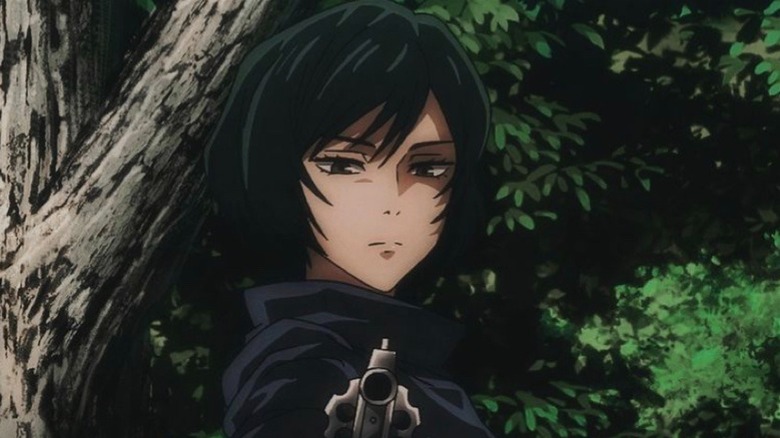
MAPPA
Mai was introduced as a somewhat antagonistic character during the Kyoto Goodwill Event Arc, which highlighted the tensions between her and her twin sister, Maki, with whom she shares a contentious relationship. Maki comes across as rude and inconsiderate of others, arming herself with a brand of cruelty that usually hides something much softer, and we are gradually privy to the horrors of being a Zenin, and the burden of being expected to shine without the presence of cursed energy. During the Perfect Preparation Arc in the manga, their father, Ogi, leaves them for dead in a disciplinary pit teeming with cursed spirits, and in their broken, delirious state, they have a final conversation about their bond and Mai leaves Maki with a morbid gift: access to her Heavenly Restriction, that can only actualize after her twin's death.
Although it is likely that Mai's sacrifice was mostly geared towards exacting revenge upon the Zenin clan, it is equally true that there was love between the sisters, even though they walked disparate paths. Such intense, visceral emotions are often complicated: both Mai and Maki were robbed of their innocence pretty early on, forced to walk a bloody path that hinged on their worth as sorcerers, and this ultimately created a rift between the two. The curse of the Zenin clan is ultimately broken when Maki stabs a reborn, cursed Naoya Zenin with the Split Soul Katana, after which, we see a glimpse of Mai's soul speaking to her sister. This is a tragic, saddening death that spurs Maki on to avenge her sister, leading to the clan massacre that is an integral aspect of her internal arc.
9. Choso Kamo (Chapter 259)

MAPPA
The deaths of Kechizu and Eso drive Choso to align himself with Kenjaku's scheme at first, but a string of events during the Shibuya Arc, and the revelation about his "father" prompts him to align with Yuji, whom he considers his "younger brother." It is not hard to understand why Choso is such a fan favorite: his initial ties to the antagonists are a result of personal grievance as opposed to a true need to harm others, and his reserved, lackadaisical demeanor shelters a protective, driven personality that emerges as tender amid a world drowned in cruelty.
Choso has come a long way since his Shibuya days, and his tragic death in Chapter 259 underlines his protective love towards Yuji, whom he shields by jumping in the way of Sukuna's Divine Flames. The fact that he prioritizes Yuji's survival over his own speaks volumes about the kind of person he is, and his death paves the path for Yuji to unleash his pent-up grief and anger when he attacks Sukuna alongside Todo. Family has always been central for someone like Choso, who was incarnated as a Cursed Womb: Death Painting, but still intensely felt the bonds inherent to human existence.
8. Toji Fushiguro (Chapter 75/Season 2, Episode 4)

MAPPA
No one utilizes the utter lack of cursed energy to their advantage like Toji Fushiguro, whose brief, yet pivotal appearance during the Hidden Inventory Arc completely changes the trajectory of Jujutsu society. After Riko Amanai is brought to safety by a young Gojo and Geto, Toji brutally slashes up the former, leaving him dead in a pool of blood. Riko's murder, followed by Gojo's resurrection, acts as a catalyst for the epic confrontation between him and Toji, whom he partially annihilates using his Hollow Purple, leading to his death. Toji's final words before his demise reveal the true essence of his character: as uncompromisingly cruel his actions might have been, there's a tragic undertone to his aspirations for his son Megumi, whom he entrusts to Gojo to ensure an upbringing removed from the Zenin influence.
Toji's death, along with Geto's turn as a genocidal cult leader later on, fundamentally alters Gojo's perspective about strength and who is worth saving from a sorcerer's point of view. Toji returns briefly with the Séance cursed technique during the Shibuya Arc, but he happily stabs himself after Megumi (who is unaware of Toji's identity) reveals that he's a Fushiguro, not a Zenin. Irrespective of whether you're moved by Toji's death, both instances are emotionally resonant for core characters and the narrative at large.
7. Masamichi Yaga (Chapter 147)

MAPPA
Although Yaga is not a major character in the same vein as Gojo or Nanami, his death is devastatingly heartbreaking, as it exposes the rotten politics governing Jujutsu society. The Shibuya incident leads to unprecedented civilian and sorcerer casualties, with the sealing of Gojo Satoru upsetting the precarious balance of natural order. For someone to take the fall, Yaga, the Principal of Tokyo Jujutsu High, takes the blame upon himself and is executed for not being able to anticipate or avert this disaster.
Gakuganji fights Yaga in this final battle and executes him once he refuses to furnish sensitive information, leading a traumatized Panda — whom Yaga essentially reared as his child — to tearfully mourn his battered corpse. Moreover, the fact that his cursed corpses are left to fend for themselves (with the process of their creation remaining a secret that Yaga takes to his grave), adds an additional layer of tragedy to this dark turn of events.
6. Junpei Yoshino (Chapter 27, Season 1, Episode 12)
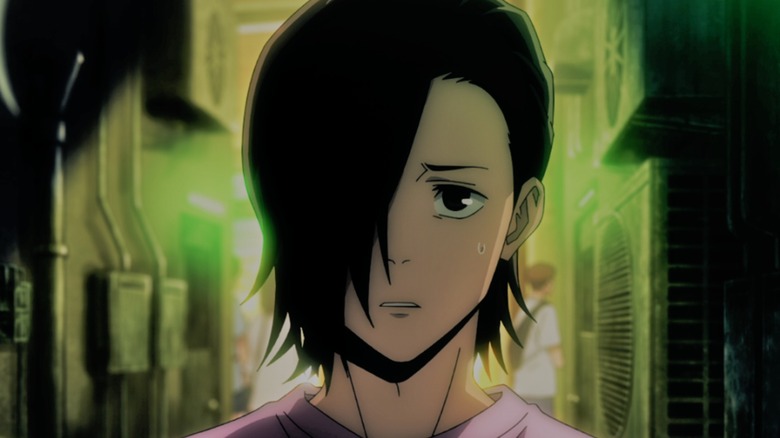
MAPPA
The tragedy and shock value inherent in Junpei's death doesn't solely stem from the horrifying nature of his murder, but how the manga — and especially the anime — chooses to reveal it. Akutami's panels vividly etch his origins and motivations, where Junpei seems on the verge of moving past his trauma after forming a sweet friendship with Yuji, who genuinely makes the kid feel better about his pain and insecurities. However, tragedy strikes after his mother is killed by none other than Mahito, who befriends Junpei under the guise of being a benevolent curse and even grants him some abilities. Led astray by this new bond, Junpei believes Mahito's lies and ends up being a pawn in his twisted game.
To mock Yuji, Mahito compels Junpei to murder a bully, but the pink-haired boy arrives to stop his friend from committing such a morally void act. Before he can do anything, Mahito uses his cursed technique to transfigure Junpei into a monstrous curse and abruptly kills him in front of Yuji. This is undoubtedly shocking in the manga, as the death underlines the cruel, unforgiving nature of society, but the anime death feels way worse, as the episode's opening grants the illusion that Junpei will go on to join Yuji at Jujutsu High. This is an absolutely gutwrenching, unforgivable way to twist the knife and drive the tragedy home.
5. Geto Suguru (Chapter 4/Jujutsu Kaisen 0)

MAPPA
Geto's trajectory in "Jujutsu Kaisen" is unspeakably tragic, as he goes from wanting to protect the weak to actively wanting to erase non-sorcerers from existence. While the Hidden Inventory Arc fleshes out the nuances of the Satoru-Suguru dynamic and lays the foundation for Geto's deflection, "Jujutsu Kaisen 0" maps the Cursed Child Arc and Geto's eventual death at the hands of his closest friend, Gojo. The fact that Gojo and Geto's bond eclipses definitions of a platonic friendship is not just subtext, as the viscerally loving nature of this relationship is blatantly used as a bargaining chip during the Shibuya incident by Kenjaku, who inhabits Geto's body after his death.
Gojo had no choice but to put an end to Geto's world-ending machinations, but the price he has to pay instead is to kill the person he so intensely loves, and whisper something so intimate to his dying friend that we, as viewers, will never be privy to it. Geto's body is later violated by Kenjaku, and the latter uses this to his advantage by putting Gojo in a minute-long state of shock at seeing Geto alive once again, which is exactly when he is trapped inside the Prison Realm. When Kenjaku mocks Gojo post-capture, Geto's body violently reacts by attempting to choke Kenjaku, as it re-enacts the muscle memory to protect Gojo even after death. If this isn't love persevering, what is?
4. Riko Amanai (Chapter 72/Season 2, Episode 3)
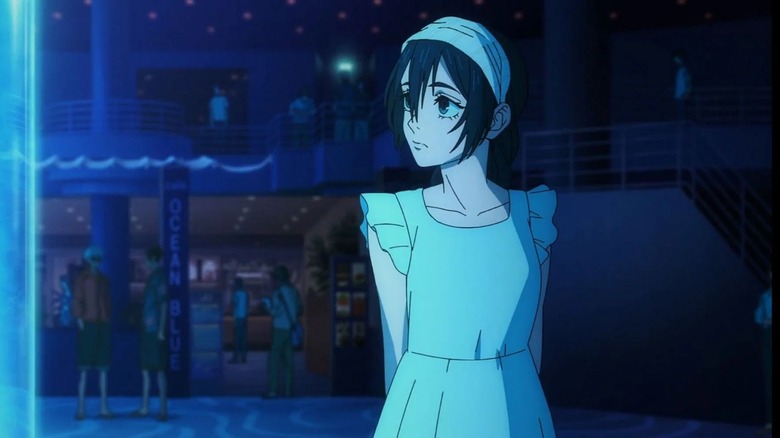
MAPPA
The emotional nexus of the Hidden Inventory Arc is Riko's sudden death, which derails Geto and Gojo's lives, along with that of Jujutsu society. Riko is poised as someone who is fated to merge with Tengen, and she seems to have accepted this inevitability since a formative age, believing that her worth lies in this sacrifice to come. However, after Gojo and Geto are tasked to keep her safe, it becomes amply clear that beneath the expectations shrouding her status as the Star Plasma Vessel, Riko is just a child with stifled desires to live life to the fullest.
This is verbalized when Geto urges her to live life on her own terms, but this beautiful moment is cruelly shattered by a fatal gunshot to the head. Before Geto can process what happened, Riko crumples to the floor, dead. The anime sets up this scene to a more devastating effect, and we the effect that it has on everyone, right from Geto's psychological break and eventual radicalization to Gojo's abrupt realization that he must protect others to continue being the strongest. Riko Amanai's death creates a domino effect with disastrous consequences, as it symbolizes innocence lost, where a life is cut short even before it can bloom.
3. Nanami Kento (Chapter 120/Season 2, Episode 18)

MAPPA
What would you rather experience: the soul-numbing monotony of a salaryman or the thrilling, yet soul-destroying life of a sorcerer? Nanami took refuge in the former after being struck by the grief of losing Haibara, but his innate need to help those in need, and protect the younger generation brought him right back to Jujutsu High as a mentor. Nanami's death is meant to hurt on a deep level, as his final moments are spent defending his students, while he dreams of embracing serenity on a beach in Malaysia. The mundane, achievable nature of this dream makes for a heartbreaking case here, as Nanami is unable to attain this in his lifetime, even though he deserves much, much more.
During the Shibuya arc, Nanami fights valiantly until the end, before he is abruptly killed by Mahito in front of an already-distressed Yuji. It is no wonder that Yuji is affected the most by his death, even though Nanami makes it a point to alleviate his accumulating guilt and express this selflessly authentic statement: "I am an adult, you are a child. I have a duty to prioritize your life over my own." He passes over the torch to Yuji before dying, gently conveying that the next generation of sorcerers can pave the path to victory even when their predecessors failed to do so.
2. Sukuna Ryomen (Chapter 268)

MAPPA
Sukuna has always been the looming antagonist of the series, his death being the end goal for the sorcerers dedicated to usurping his cause. When this long-awaited moment finally occurs in Chapter 268, Sukuna goes out in a pathetic manner, which is fitting, considering his limitless hubris and the deaths he has caused with his mere existence. Yuji's Black Flash (and Nobara's return) does most of the heavy lifting here, the impact forcibly removing the King of Curses from Megumi's body and reducing him to a tiny ball of slime that can be easily squashed. Even so, Yuji urges him to join forces with him, but Sukuna refuses, demonstrating the irredeemable, unapologetic villainy he is defined by, one last time.
Although most "JJK" manga readers were expecting something more climatic and theatrical, I think Sukuna's death is tonally perfect, as he is unceremoniously robbed of every delusion of grandeur before his demise and he goes out doing what he does best: hating on Yuji. Could this death have been better paced and treated with a little more gravitas? Sure, but it is still a seminal juncture in the story as it heralds the end of an era and ushers in a new one.
1. Gojo Satoru (Chapter 236)

MAPPA
Perhaps one of the most controversial, hard-hitting deaths in the history of shōnen manga, Gojo's demise shook the world to its core and cast doubts about the future of "Jujutsu Kaisen" when the chapter in question was released. Droves of people set up memorials in Gojo's name in the real world and left sticky-note eulogies on hand-drawn murals of the blue-eyed sorcerer, creating a watershed moment in the fandom's collective consciousness, where everyone came together to mourn the death of the most beloved character in the series. The reasons behind such a visceral, yet authentic reaction are rather simple: Gojo's larger-than-life personality was the beating heart of "Jujutsu Kaisen," and the brutal nature of his death completely shattered our expectations surrounding a character who was undoubtedly considered "the strongest:" the kind that makes it to the endgame stage and lives to tell the tale.
Akutami's reasons for killing off Gojo partially stem from disdain for his own creation and the difficulties of mapping a satisfying arc for a mega-overpowered protagonist, but the results are devastating nonetheless, as it completely shifts the onus onto a younger generation of sorcerers, whose lives emerge as more precious than ever. The image of Gojo's bloody, bisected corpse became the focal point for delusional theory-crafting and heated discourse (I've witnessed this firsthand, cause I was there), and there was a point when the most hopeful among us believed that he would inevitably return. Gojo's legacy has seeped everywhere, and there is something deeply moving about a man who used his innate powers to shield and empower students until his last breath, taking on a more open, nurturing role for children who are not allowed the luxury to hold on to their innocence in such a violent, volatile world.
Rest in peace, Gojo Satoru. You will never be forgotten.

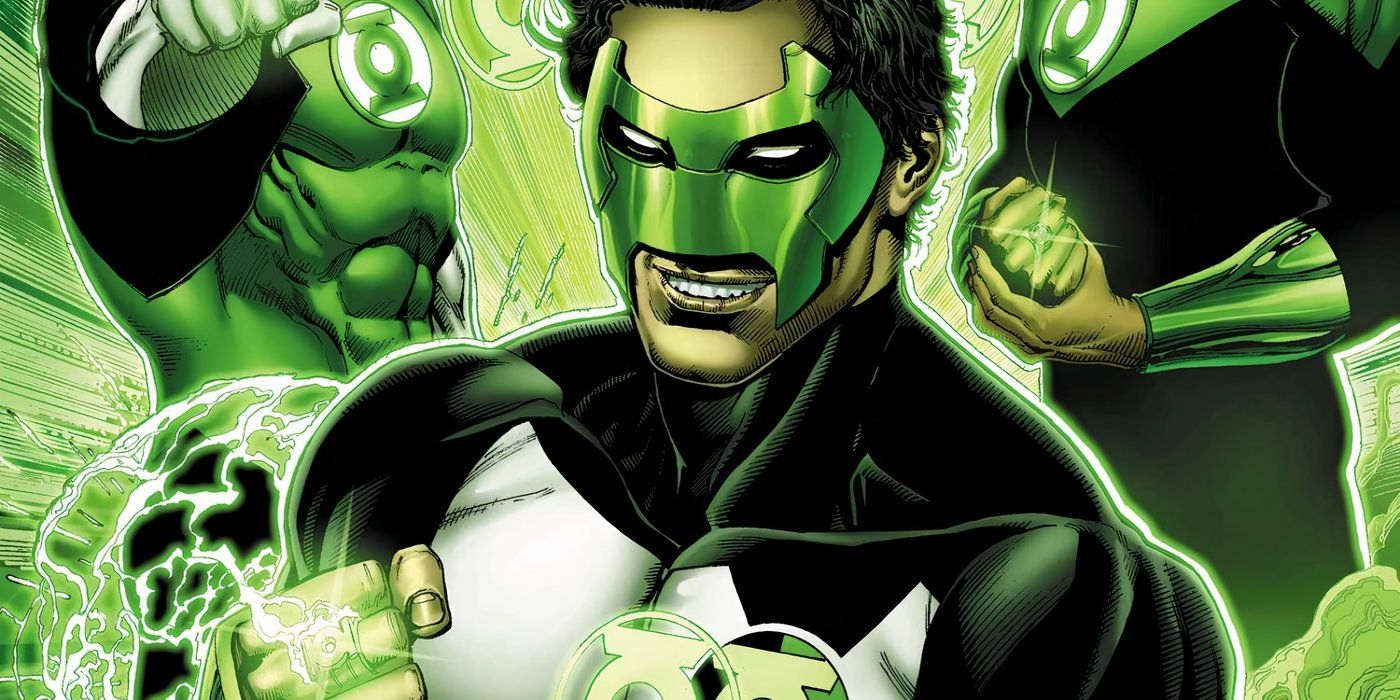
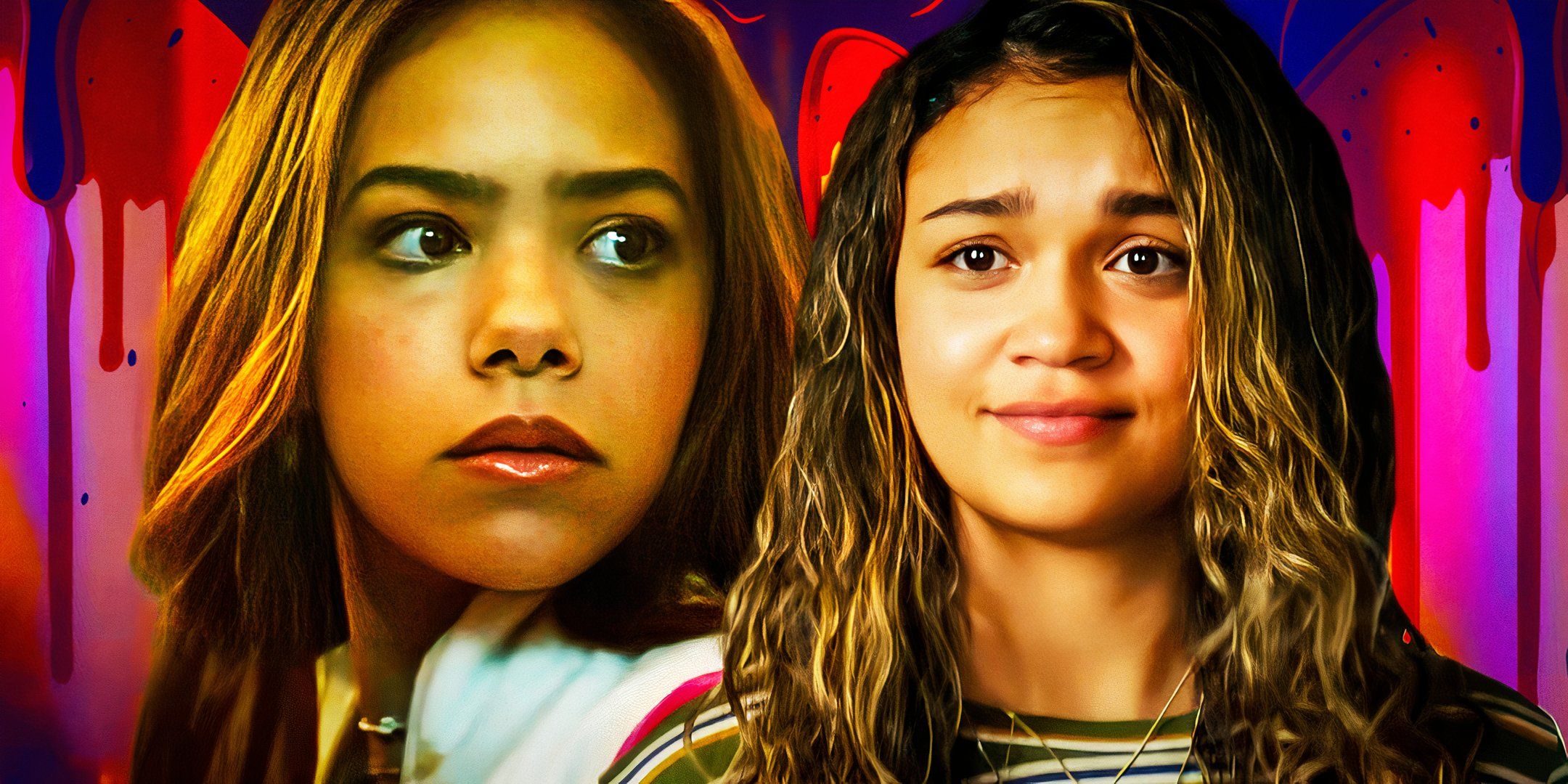

:quality(85):upscale()/2024/10/29/625/n/1922564/ec222ac66720ea653c5af3.84880814_.jpg)
:quality(85):upscale()/2024/10/25/846/n/49351082/bfc0fdb3671bef086c3703.42134063_.jpg)
:quality(85):upscale()/2021/07/06/971/n/1922153/7d765d9b60e4d6de38e888.19462749_.png)
:quality(85):upscale()/2024/10/29/957/n/1922441/c62aba6367215ab0493352.74567072_.jpg)

 English (US) ·
English (US) ·